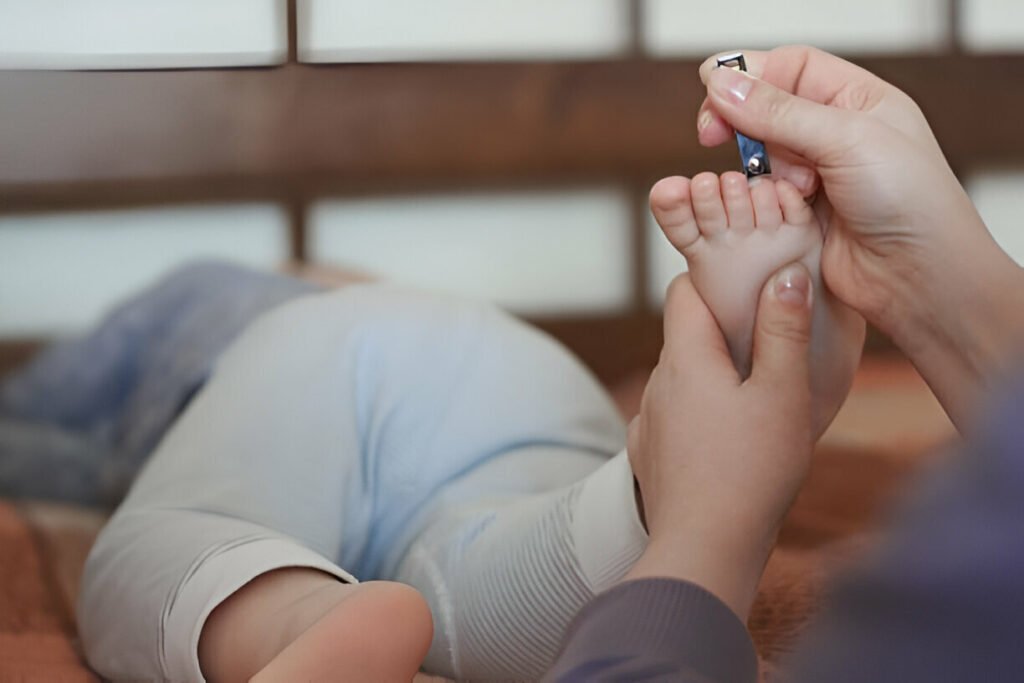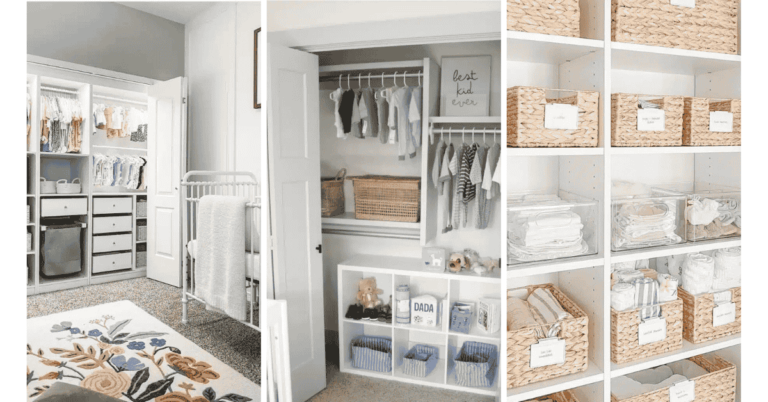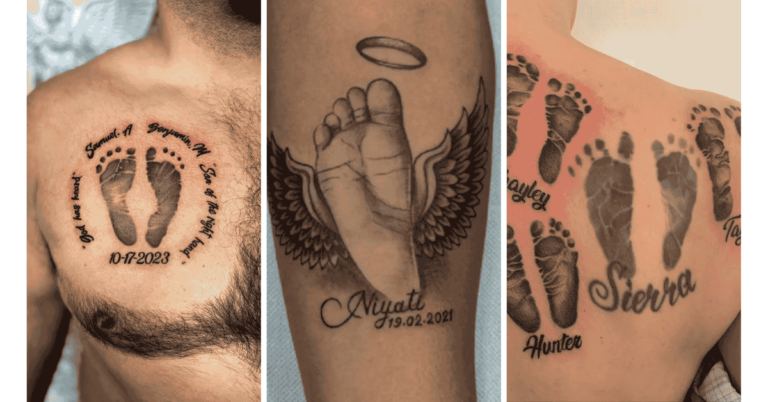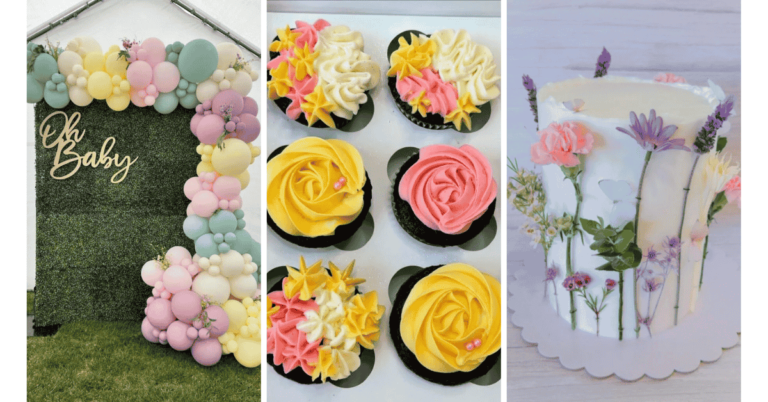How to Trim Your Baby’s Nails: A Safe and Simple Guide

Trimming your baby’s tiny nails can feel intimidating at first. Those miniature fingernails might look harmless, but they grow surprisingly fast and can be sharp enough for your little one to scratch their delicate skin. Learning the proper technique for safe nail trimming will help protect your baby while giving you confidence in this essential care routine.
Why Trimming Baby Nails Matters
Babies lack muscle control over their hand and arm movements, which means they can easily scratch themselves while waving their hands around. These accidental scratches are especially common around the face and eyes. Keeping nails short prevents these injuries and helps your baby stay comfortable.
Baby nails grow remarkably quickly, especially during the first few months of life. Newborns may need nail trims every few days, while older babies typically need them once or twice per week. The good news is that newborn nails are soft and flexible, making them easier to cut than adult nails.
When to Trim Baby Nails
Timing makes all the difference when it comes to successful nail trimming. The best times to tackle this task are:
During Sleep

Many parents find it easiest to trim nails while their baby is sleeping. Your little one will be still and relaxed, giving you better access to their hands and feet.
When Baby is Calm
Choose moments when your baby is content and drowsy rather than fussy or overstimulated. Right after feeding or during a peaceful awake period often works well.
After Bath Time
Nails are softer after a bath, which can make cutting easier. However, make sure your baby is completely dry and comfortable before starting.
Essential Tools for Baby Nail Care
Having the right equipment makes nail trimming safer and more effective:
Baby Nail Scissors
Special baby scissors with rounded tips are designed to prevent accidental pokes if your baby moves suddenly. The small size gives you better control over tiny nails.
Baby Nail Clippers
Some parents prefer baby nail clippers over scissors. Many come with built-in magnifying glasses to help you see clearly. Choose clippers specifically designed for infants.
Emery Board or Nail File

A baby-sized emery board can smooth rough edges after cutting or serve as a gentle alternative to scissors for very soft newborn nails.
Step-by-Step Nail Trimming Guide
Follow these steps for safe and effective nail trimming:
Step 1: Get Comfortable
Find a position that works for both you and your baby. You might hold your baby in your lap, sit in a comfortable chair, or even trim nails while your baby lies on a changing table. Make sure you have good lighting so you can see clearly.
Step 2: Hold the Finger Steady
Gently but firmly hold your baby’s palm and finger with one hand. Use your thumb and index finger to hold the finger you’re working on, pressing the fingertip pad down and away from the nail.
Step 3: Cut Following the Natural Curve
For fingernails, follow the natural curve of the nail as you cut. Make small, gentle snips rather than trying to cut the entire nail at once. Be careful not to cut too close to the skin or “quick” underneath.
Step 4: Trim Toenails Straight Across
Unlike fingernails, toenails should be cut straight across rather than curved. This helps prevent ingrown toenails as your baby grows.
Step 5: Check for Smooth Edges
After cutting, run your finger along the nail edges to check for any sharp or jagged spots. Use an emery board to gently smooth any rough areas.
Helpful Tips and Tricks
These strategies can make nail trimming easier for both you and your baby:
Use Distraction

Sing songs, play peek-a-boo, or give your baby a toy to hold with their free hand. Older babies often cooperate better when they’re entertained.
Work as a Team
If possible, have your partner help. One person can hold the baby steady and provide comfort while the other focuses on trimming.
Take Your Time
Don’t rush the process. It’s better to trim a few nails at a time over several sessions than to stress both you and your baby by trying to do everything at once.
Keep Tools Handy
Store nail clippers in your diaper bag so you can take advantage of calm moments wherever you are.
What to Do If You Accidentally Cut the Skin
Even experienced parents occasionally nick their baby’s skin while trimming nails. If this happens:
- Stay calm and don’t panic
- Apply gentle pressure with a clean cloth or sterile gauze pad
- Hold the pressure until bleeding stops
- Don’t use a bandage, as it could become a choking hazard if it comes loose
Most minor cuts heal quickly without any problems. However, if you’re concerned about the cut or if it seems infected, contact your pediatrician.
How Often to Trim Baby Nails
The frequency of nail trimming depends on your baby’s age and how quickly their nails grow:
- Newborns (0-3 months): Every 2-3 days for fingernails, weekly for toenails
- Older babies (3+ months): Once or twice per week for fingernails, every 2-3 weeks for toenails
Remember that toenails grow more slowly than fingernails and require less frequent attention.
Alternative Methods
If you’re too nervous to use scissors or clippers, consider these alternatives:
Filing Only

Use a soft emery board to file nails down gradually. This method takes longer but eliminates the risk of cutting skin.
Peeling (Not Recommended)
Some people suggest peeling soft newborn nails, but this can remove too much nail and potentially cause injury. Stick to proper tools for the safest results.
Signs of Nail Problems
Watch for these signs that might indicate a nail problem requiring medical attention:
- Redness or swelling around the nail
- Signs of infection such as pus or excessive warmth
- Ingrown nails
- Persistent bleeding from a cut
If you notice any of these symptoms, contact your pediatrician for guidance.
Building Confidence in Your Nail Care Routine
Remember that nail trimming becomes easier with practice. Start slowly, be patient with yourself, and don’t hesitate to ask for help from your partner, family members, or healthcare provider. Most babies adapt quickly to regular nail care when it becomes part of their routine.
With the right tools, timing, and technique, you can keep your baby’s nails safely trimmed while minimizing stress for both of you. This simple but important care task will soon become second nature, helping you keep your little one comfortable and scratch-free.






